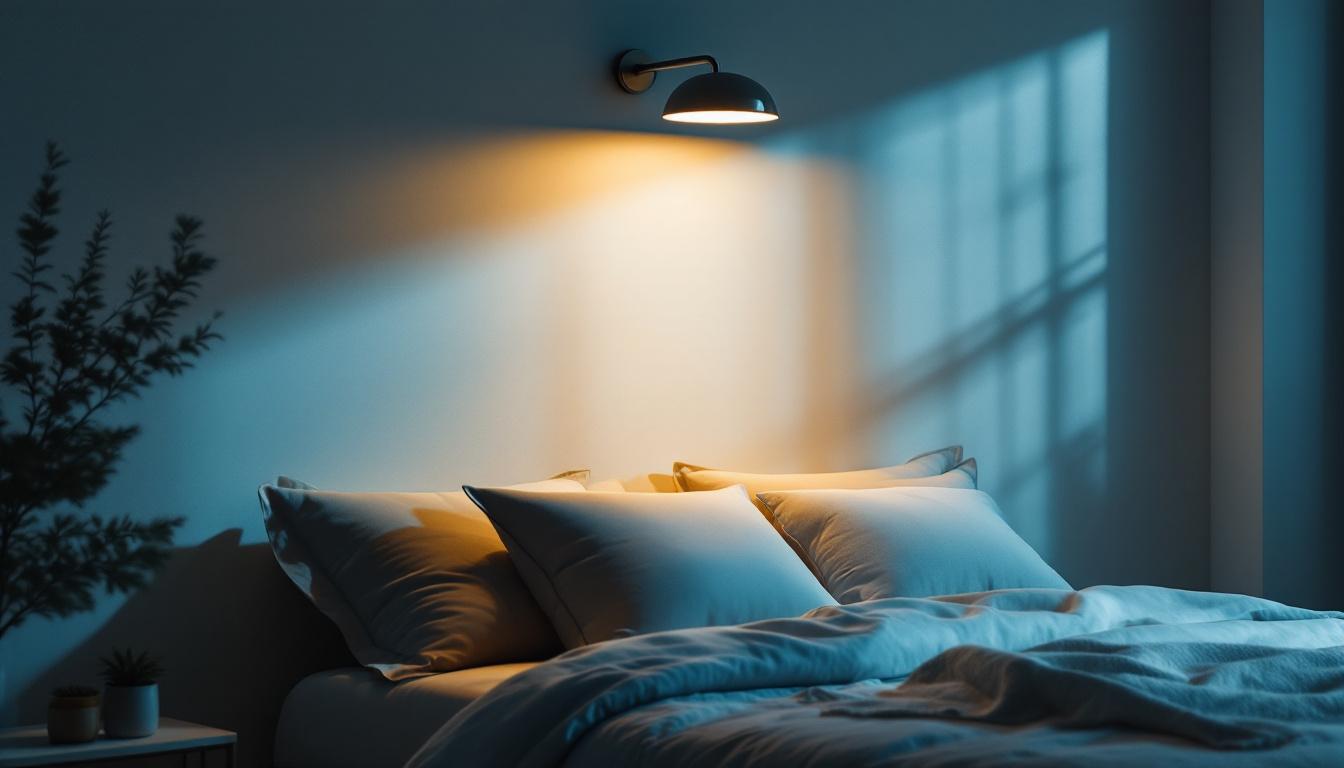
In the ever-evolving world of lighting design, LED ceiling fixtures have emerged as a popular choice among contractors and homeowners alike. Their energy efficiency, longevity, and versatility make them an attractive option for various applications. However, to maximize the benefits of LED ceiling fixtures, it is essential for lighting contractors to adopt best practices that ensure optimal installation and performance. This article explores key strategies and considerations that can enhance the effectiveness of LED ceiling fixtures in any project.
Before diving into best practices, it is crucial for lighting contractors to have a solid understanding of LED technology. LEDs, or Light Emitting Diodes, are semiconductor devices that convert electricity into light. Unlike traditional incandescent or fluorescent bulbs, LEDs do not rely on filaments or gases, which contributes to their durability and efficiency. This fundamental difference not only enhances their performance but also allows for innovative designs that can be tailored to various applications, from residential to industrial settings.
One of the primary advantages of LED fixtures is their energy efficiency. They consume significantly less power compared to traditional lighting options, which translates to lower electricity bills for clients. Additionally, LEDs have a longer lifespan, often lasting up to 25,000 hours or more, reducing the frequency of replacements and maintenance costs. This longevity is particularly beneficial in hard-to-reach locations, where changing bulbs can be labor-intensive and costly. Furthermore, the reduced heat output of LEDs means that they contribute less to cooling costs in warmer climates, making them an even more attractive option for energy-conscious consumers.
LEDs are available in a range of color temperatures, measured in Kelvin (K). Understanding these variations is essential for contractors, as different settings may require different lighting atmospheres. For instance, warmer tones (2700K-3000K) are ideal for residential spaces, while cooler tones (4000K-5000K) may be more suitable for commercial environments. Providing clients with options can enhance their satisfaction and the overall aesthetic of the space. Additionally, the quality of light produced by LEDs is often superior to that of traditional bulbs, offering better color rendering and consistency. This is particularly important in settings such as art galleries or retail spaces, where accurate color representation can significantly impact the perception of products and artwork.
Proper installation is critical to ensuring the performance and longevity of LED ceiling fixtures. Following industry best practices can help contractors avoid common pitfalls and deliver high-quality results.
Before installation begins, thorough planning is essential. Contractors should assess the space to determine the optimal placement of fixtures. Factors such as ceiling height, room dimensions, and the intended use of the area should be considered. A well-thought-out layout not only enhances the functionality of the lighting but also contributes to the overall design aesthetic. For instance, in a living room, fixtures should be positioned to create a warm and inviting atmosphere, while in a workspace, they should be arranged to minimize shadows and maximize visibility. Utilizing lighting design software can aid in visualizing different layouts and ensuring that all areas are adequately illuminated.
With a plethora of LED ceiling fixtures available on the market, selecting the right one for a specific application is vital. Contractors should evaluate the fixture’s lumen output, wattage, and beam angle to ensure it meets the lighting requirements of the space. Additionally, considering the fixture’s design and finish can help it blend seamlessly with the existing decor. Energy efficiency ratings, such as ENERGY STAR certification, should also be taken into account, as they indicate the fixture’s performance and potential cost savings over time. Moreover, exploring options that offer adjustable color temperatures can provide versatility, allowing users to switch between warm and cool light depending on the mood or activity.
When installing LED fixtures, attention to electrical connections is paramount. Contractors should ensure that the wiring is compatible with the LED technology being used. This includes checking for the correct voltage and ensuring that the circuit can handle the load. Utilizing high-quality connectors and ensuring secure connections can prevent issues such as flickering or premature failure of the fixtures. Additionally, it is advisable to incorporate a dimmer switch compatible with LED lights, as this can enhance energy savings and provide users with greater control over their lighting environment. Furthermore, ensuring proper grounding and following local electrical codes will not only enhance safety but also improve the overall reliability of the installation.
Incorporating lighting controls can significantly enhance the performance and functionality of LED ceiling fixtures. Lighting contractors should consider various control options to provide clients with customizable lighting solutions. By understanding the specific needs of each space, contractors can tailor their lighting designs to improve both aesthetics and energy efficiency, ultimately leading to higher client satisfaction.
Dimming capabilities allow users to adjust the brightness of LED fixtures, creating the desired ambiance for different occasions. Smart lighting controls, which can be integrated with home automation systems, offer even greater flexibility. These systems enable users to control lighting remotely, set schedules, and even change color temperatures, providing a modern touch to any space. Additionally, many smart controls can be programmed to respond to voice commands or mobile app instructions, making it easier for users to manage their lighting without needing to physically interact with switches or dimmers.
Incorporating daylight harvesting techniques can optimize energy consumption and enhance the natural lighting experience within a space. By using sensors that detect natural light levels, contractors can program LED fixtures to adjust their brightness accordingly. This not only saves energy but also creates a more comfortable environment for occupants. Furthermore, the integration of daylight harvesting can lead to significant cost savings over time, as it reduces reliance on artificial lighting during daylight hours. As an added benefit, studies have shown that spaces with ample natural light can improve productivity and well-being, making daylight harvesting not just an energy-saving measure, but also a valuable design choice for enhancing the quality of life within a building.
While LED ceiling fixtures offer numerous benefits, contractors may encounter challenges during installation and maintenance. Being prepared to address these issues can lead to smoother project execution and satisfied clients.
Although LEDs generate less heat than traditional lighting, they still require proper heat management to ensure longevity. Contractors should ensure that fixtures are installed in well-ventilated areas and that any heat sinks are appropriately positioned. This will help prevent overheating and extend the lifespan of the fixtures. Additionally, it’s important to consider the ambient temperature of the installation site; extreme heat or cold can affect LED performance. Using thermal management solutions, such as heat-resistant materials or cooling fans, can further enhance the efficiency and durability of the lighting system.
When retrofitting LED fixtures into existing lighting systems, compatibility can be a concern. Contractors should assess whether the current electrical infrastructure can support the new fixtures without issues. In some cases, transformers or drivers may need to be replaced to ensure optimal performance. Furthermore, it’s essential to evaluate the dimming capabilities of existing systems, as not all LED fixtures are compatible with older dimmers. Upgrading to modern dimming systems can enhance energy savings and provide clients with greater control over their lighting environments, ultimately leading to increased satisfaction with the installation.
Proper installation techniques are crucial for maximizing the performance of LED ceiling fixtures. Contractors should familiarize themselves with the specific mounting requirements of each fixture type, as they can vary significantly. For instance, recessed fixtures may require precise cutting of ceiling materials, while surface-mounted fixtures may need additional support brackets to ensure stability. Moreover, ensuring that all wiring is correctly insulated and secured can prevent potential electrical hazards and ensure compliance with local building codes. Taking the time to follow best practices during installation can save contractors from costly rework and enhance the overall quality of the project.
While LEDs are known for their longevity, routine maintenance is still essential to keep them functioning at their best. Contractors should educate clients about the importance of periodic inspections and cleaning of fixtures, as dust and debris can accumulate and affect light output. Additionally, providing guidance on how to troubleshoot common issues, such as flickering lights or color temperature shifts, can empower clients to address minor problems before they escalate. Offering a maintenance plan or service can also foster long-term relationships with clients, ensuring they have a reliable partner for any future lighting needs.
Once the installation is complete, ongoing maintenance and client education are essential for maximizing the benefits of LED ceiling fixtures. Contractors should provide clients with guidance on how to care for their new lighting systems.
Encouraging clients to conduct regular inspections of their LED fixtures can help identify potential issues before they become significant problems. This includes checking for any signs of wear, ensuring that the fixtures remain clean, and verifying that all connections are secure. regular maintenance can prolong the lifespan of the fixtures and maintain their performance.
Educating clients about their new LED fixtures is equally important. Contractors should explain the benefits of LED technology, how to use any installed controls, and the importance of regular maintenance. Providing clients with this knowledge empowers them to make informed decisions and enhances their overall satisfaction with the installation.
The lighting industry is continually evolving, with new technologies and trends emerging regularly. For lighting contractors, staying informed about these developments is crucial for maintaining a competitive edge.
Participating in workshops, seminars, and online courses can help contractors stay updated on the latest advancements in LED technology and installation techniques. These educational opportunities also provide valuable networking prospects with other professionals in the field.
Subscribing to industry publications and following reputable online resources can keep contractors informed about the latest trends, products, and best practices. Being knowledgeable about new technologies can enhance a contractor’s ability to offer innovative solutions to clients.
LED ceiling fixtures represent a significant advancement in lighting technology, offering numerous benefits for both contractors and clients. By understanding LED technology, following best practices for installation, incorporating advanced controls, and addressing common challenges, lighting contractors can ensure successful projects that meet client expectations. Additionally, ongoing maintenance and client education play vital roles in maximizing the longevity and performance of LED fixtures.
As the industry continues to evolve, staying informed about new trends and technologies will empower contractors to provide exceptional service and innovative solutions. Embracing these best practices will not only enhance the quality of installations but also solidify a contractor’s reputation as a knowledgeable and reliable professional in the lighting industry.
Ready to elevate your lighting installations with industry-leading LED ceiling fixtures? At LumenWholesale, we provide lighting contractors like you with the highest quality, spec-grade lighting products at unbeatable wholesale prices. Say goodbye to local distributor markups and hello to superior lighting that meets the highest industry standards. With our hassle-free bulk buying and free shipping, you can ensure every project shines with reliability and high performance. Don’t compromise on quality or value—choose LumenWholesale for the perfect blend of affordability and convenience. Wholesale Lighting at the Best Value is just a click away.

Discover innovative strategies to future-proof your outdoor lighting projects.

Discover common oversights in over bed light fixtures that lighting contractors often miss.

Discover essential insights into 4 bulb fluorescent lighting systems with our comprehensive guide tailored for lighting contractors.

Discover essential tips and expert strategies for lighting contractors looking to master recessed lighting replacement.